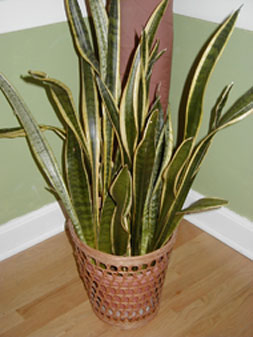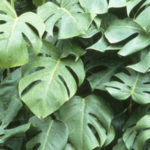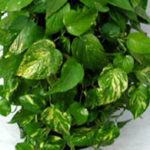LOW MAINTENANCE SANSEVIERIA
Looking for a plant you can forget about for a month at a time and it will still look great when you finally remember it? Try sansevieria. Also known as the snake plant and mother-in-law tongue, this is probably the most tolerant of all houseplants. It will go without watering for weeks at a time, rarely needs fertilizing and is usually pest free. With its long, spear-like leaves that stand rigidly upright, sansevieria also makes an attractive addition to the indoor garden. Foliage tends to be variegated in patterns resembling an exotic snake. You’ll find green foliage accented with cream, white, yellow or lime green. This versatile plant fits into just about any decorating scheme, looking especially striking when highlighted in a contemporary decor. Under ideal conditions it produces cream-colored flowers that are fragrant at night.
Royal, Rocky,Beginnings
Although it’s often referred to as a succulent, sansevieria is actually a member of the agave family. It’s native to the dry, rocky habitats of tropical Africa, and parts of Arabia and India. The plant was named after Raimon de Sangro, who was a little known Prince of Sanseviero and a patron of horticulture. He lived in the 1700s.

Growing Tips for Mother-in-Law Tongue (Sansevieria)
- Lighting. Put this plant just about anywhere. It will tolerate very low light to a bright sunroom. The more light it receives, the more vivid the leaf colors will be and the more it will grow. (Plants grown in dim locations tend to grow very slowly.)
- Watering. Sansevieria is drought tolerant and will only falter if overwatered. The leaves grow from thick rhizomes and overwatering can lead to leaf and crown rot. Water only when the soil has dried out, which can be several weeks in some cases. When you do water, drench the plant, letting the water run out the bottom of the pot. Avoid wetting the foliage and make sure to keep saucers clear of accumulated water, which will prevent rot and salt build-up.
- Fertilizing. Sansevieria needs infrequent feeding. Fertilize once or twice a year with an all-purpose organic food.
- Trimming and cleaning. The tough leaves of the snake plant hold up well. At times, however, a leaf will yellow, wither, or become damaged. Remove the leaf with a sharp knife or scissors at soil level.
- Repotting. Sansevieria have a small root system and do well in the same pot for years. Repot only when necessary. Use a cactus mix, or other well draining soil that has plenty of pumice or perlite and some sand. Repot in a container that is no more than one size larger.
- Propagate. If you wish to duplicate leaf color, create new plants from division or offsets. Although you can propagate from leaf cuttings, the resulting plants will lack the same coloring as the parent plant.
- Pests. Although pests are rarely a problem, mealybugs can sometimes crop up. Treat by spraying with isopropyl alcohol.





